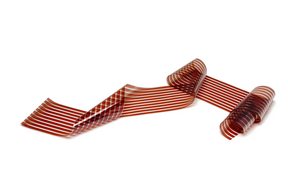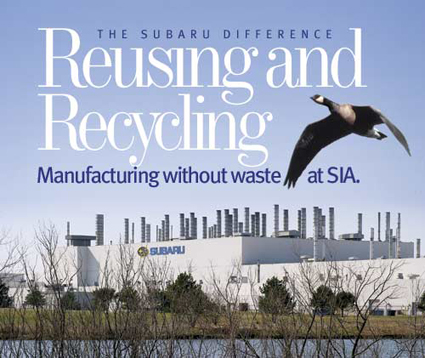 Imagine plugging your laptop into its case to charge the battery. Or your cell phone into a beach umbrella. Or simply slipping it into your shirt pocket. Konarka, a next generation solar energy startup, is currently promoting and raising R&D capital for its Power Plastic line, and while these solar cells, printed on sheets of plastic similar to camera film, can’t quite manage that last one, plans are definitely on the drawing board.
Imagine plugging your laptop into its case to charge the battery. Or your cell phone into a beach umbrella. Or simply slipping it into your shirt pocket. Konarka, a next generation solar energy startup, is currently promoting and raising R&D capital for its Power Plastic line, and while these solar cells, printed on sheets of plastic similar to camera film, can’t quite manage that last one, plans are definitely on the drawing board.
Power Plastic is a new type of solar cell. Instead of small, brittle silicon wafers, it is composed of a nano-enabled photovoltaic polymer ink printed on opaque sheets of thin film using a revamped commercial printing press acquired from Polaroid. However, despite obvious advantages, including the cheap cost of manufacturing, this technology does have its drawbacks. Power Plastic is only 6% efficient — compared to the 16% to 20% of normal solar panels. And it only lasts about 5 years before it needs to be replaced as opposed to the 30 or so of current silicon technology.
 Konarka, however, is undaunted. In mid-December, they formed an alliance with the French oil conglomerate Total; $45 million bought the corporation a 20% stake in the alternative energy company. They plan on using the capital to further improve their product as well as develop applications with several of Total’s subsidiaries, including Bostik, Hutchinson, and Sartomer. This announcement comes in addition to the $115 million Konarka previously raised in 2008.
Konarka, however, is undaunted. In mid-December, they formed an alliance with the French oil conglomerate Total; $45 million bought the corporation a 20% stake in the alternative energy company. They plan on using the capital to further improve their product as well as develop applications with several of Total’s subsidiaries, including Bostik, Hutchinson, and Sartomer. This announcement comes in addition to the $115 million Konarka previously raised in 2008.
Power Plastic is capable of converting both indoor and outdoor light into energy, is lightweight, and, unlike some of the other thin film solar cell technology appearing on the market that is printed on metal foil, extremely flexible. The company currently has a prototype of a portable device that can charge a cell phone in under an hour. More such developments are on the way. With their influx of capital, Konarka also hopes to increase the efficiency of Power Plastic and develop a transparent version that could be built into windows to power buildings as well as a more flexible variety that could eventually be woven into clothing.
At the moment, the company is selling several hundred thousand square meters to SkyShades, an Australian company that sells solar patio umbrellas and awnings, and which hopes to install it on the parking lot canopies of the Orlando International Airport. Konarka is also working on a project for the U.S. Department of Defense to create solar power-enabled tents capable of recharging soldiers’ equipment.
Photo Credits: Konarka







This is the kind of innovation that will enable us to repower America.
This is the kind of innovation that will enable us to repower America.
Tale was a runaway success. ,
Using this unique combination in an organic solar cell recipe can enhance the efficiency of future painted-on solar cells, I hope to see this process become an inexpensive energy alternative for households around the world.
Using this unique combination in an organic solar cell recipe can enhance the efficiency of future painted-on solar cells, I hope to see this process become an inexpensive energy alternative for households around the world.
Energy is the primary element required for any work. With the revolution in technology, it has been realised to discover new energy resources. At earlier stage the main energy resources were wind, sun and water.